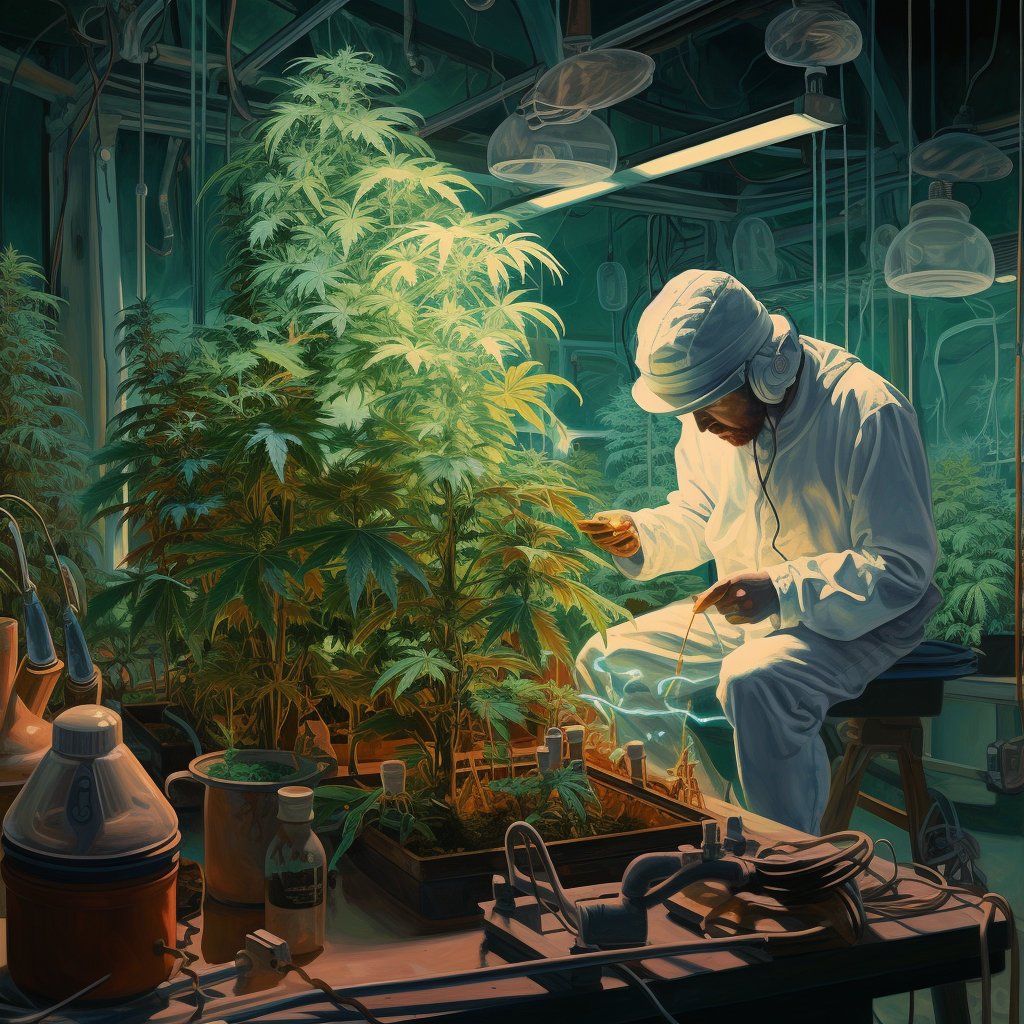ScrOG, or Screen of Green, is a cannabis training technique designed to optimize the growth and yield of your plants. The primary purpose of ScrOGging is to manually alter the plant’s natural growth patterns, ensuring all buds are on an even layer. This is achieved by bringing the lower growth up and the main cola down, creating a uniform canopy.
In this Article
Overview of ScrOG Process
The ScrOG process is a form of Low Stress Training (LST) where the main goal is to maximize the footprint of your light. With standard, Christmas tree style plants, you can only lower the light until it’s close enough to the top cola. However, with ScrOG, you divide the main cola and raise all the lower buds up to the canopy, growing the plant horizontally until a few weeks into the Flowering stage. This horizontal growth is crucial in ScrOGging, as it allows for an even distribution of light across all buds, leading to a more abundant yield.
Making Your Screen
When creating your screen for ScrOGging, the materials you choose can greatly impact the process. Some popular materials include string, twine, plastic fencing, and chicken wire. Each has its pros and cons, and the choice depends on your specific needs and preferences.
Once you’ve chosen your material, you’ll need to construct a frame. This is typically a simple square or rectangle, made from lumber and fitted with eye hooks for attaching your screen material.
Mounting the screen is the final step. The height of the screen can be adjusted according to your needs, but many growers prefer a system that allows for easy height adjustments. This could be a peg system or something more innovative, like shower curtain rods.
Vegetative Stage
The Vegetative Stage is a critical time in the ScrOGging process. During this stage, you’ll need to top your plants to spread them out horizontally. Topping is a technique that splits a main cola into two, creating more arms to spread out across the screen.
To build the perfect plant for ScrOGging, you’ll need to employ a 4-way Low Stress Training (LST) technique. This method increases canopy square footage and makes the plant fuller or bushier. It involves taking a plant that wants to grow straight up as one main arm and splitting it so it becomes four main arms. These are then trained to grow horizontally, symmetrically, in preparation to go under the screen. This ensures a proper scrog where you maximize the footprint of your light to cover a perfect blanket of bud.
Flowering Stage
The Flowering Stage is the final stage of the ScrOG process. During this stage, the importance of horizontal growth becomes even more apparent. As the plant enters the flowering stage, it will naturally want to stretch upwards. However, in a ScrOG setup, the grower must maintain the horizontal growth pattern to ensure an even canopy and light distribution.
The process of tucking is crucial during this stage. Tucking involves gently bending and weaving the branches under the screen as they grow. This keeps the canopy flat and even, ensuring all bud sites receive equal light exposure.
The final result of the ScrOG process is a flat, even canopy of buds. This maximizes the efficiency of your light and can significantly increase your yield compared to traditional growing methods. The buds are larger and more uniform, and the plant is healthier overall due to the improved light exposure.
Frequently Asked Questions
Which strains can be used?
Almost any strain can be used in a ScrOG setup. However, strains that naturally grow in a bushy manner and respond well to topping and LST are ideal.
Specific strain examples:
Can ScrOG be used in Hydro?
Yes, ScrOG can be used in a hydroponic setup. In fact, the rapid growth rates in hydroponics can be beneficial for a ScrOG setup.
What size plant containers should be used?
The size of the plant container will depend on the size of your grow space and the number of plants you’re growing. However, a general rule of thumb is to use 1-gallon pots for every foot of plant height.
Can ScrOG be used for perpetual harvests?
Yes, ScrOG is an excellent method for perpetual harvests. By continuously training new plants into the screen as others are harvested, you can achieve a constant cycle of growth and harvest.
Can ScrOG be used with clones?
Yes, clones can be used in a ScrOG setup. In fact, using clones can make the process easier, as all plants will grow at a similar rate and have similar needs.





